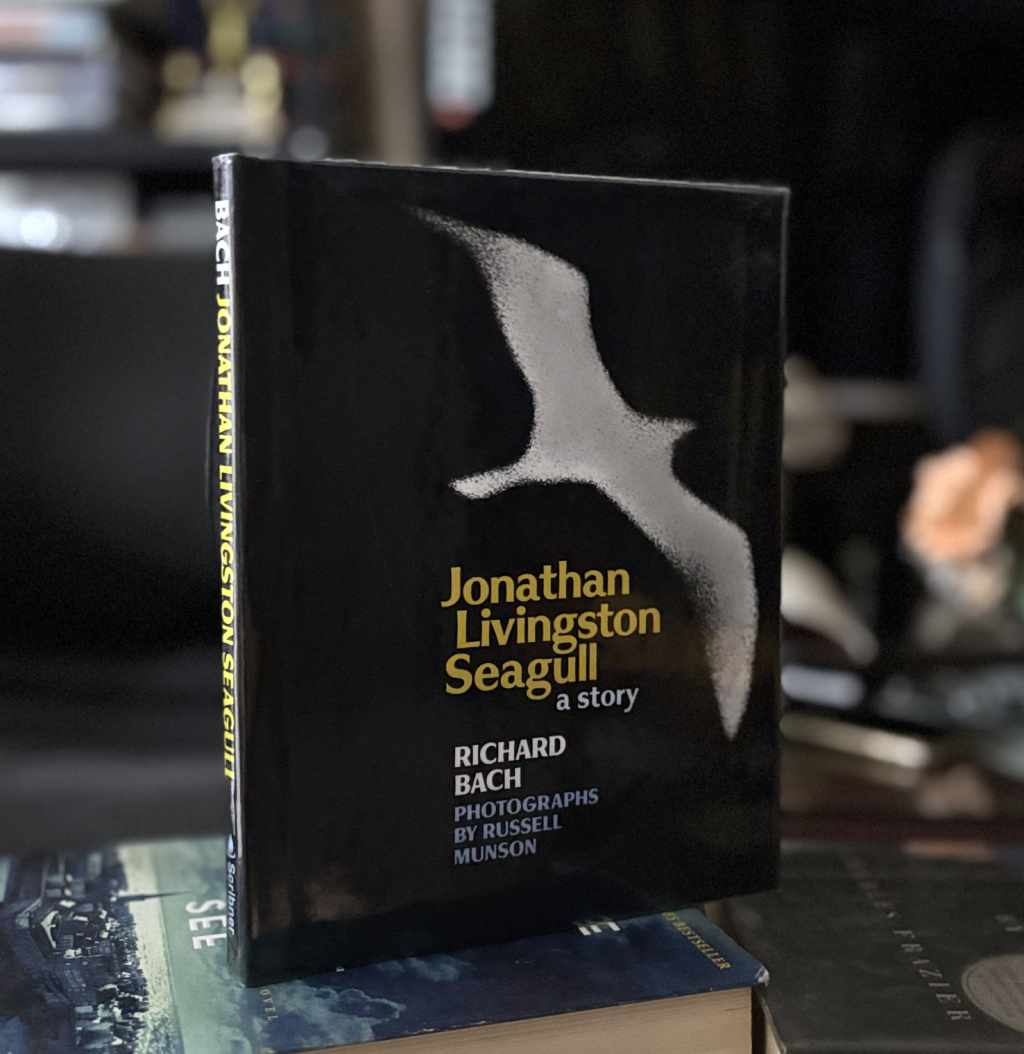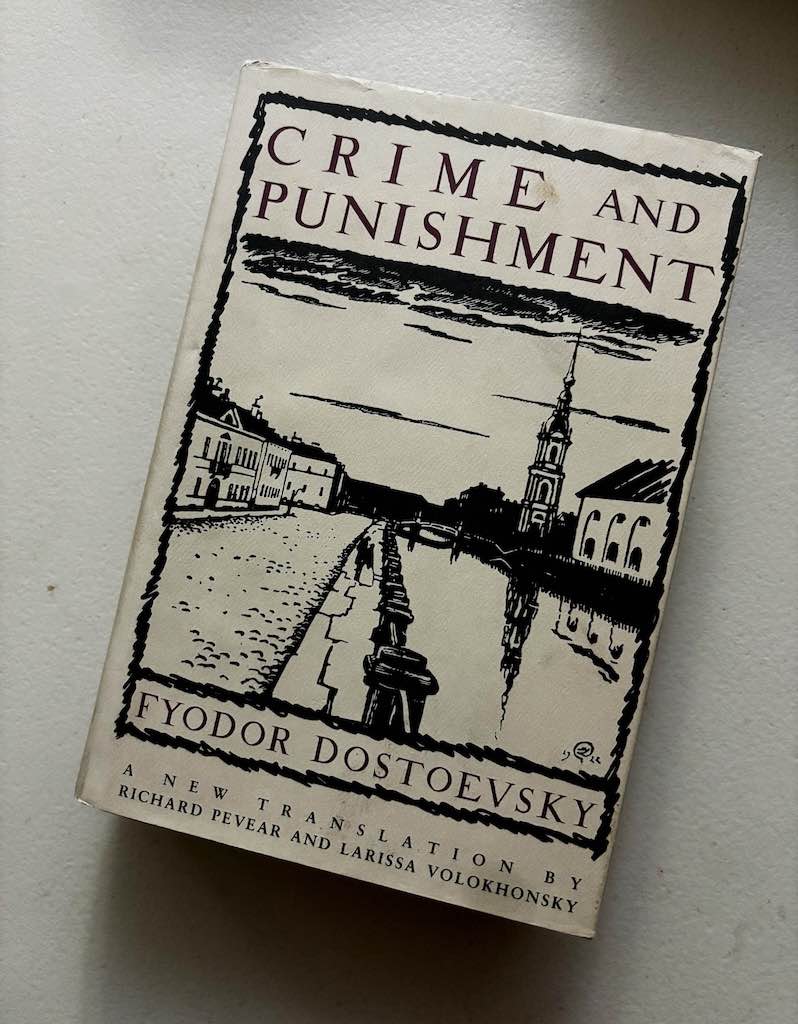On the surface, Richard Bach’s Jonathan Livingston Seagull (1970) is a simple parable about a seagull drawn to the pursuit of flight. Beneath this premise, however, lies a disciplined meditation on self-mastery and freedom. Each movement in the novella captures the precision of keen observation and the demanding, iterative work of perfecting a skill, tracing how a commitment to a single act can evolve into a philosophy of being.
Bach builds his narrative around the purpose of determination and discovery, expressed through measured language and deliberate narrative pacing. Through Jonathan’s journey, the story explores questions of perfection, transformation, and the less visible forces that guide those who break from familiar routines. The discussion that follows examines these dimensions in depth, reflecting on how the novella unites myth, philosophy, and the artful renewal of narrative form.
Character Analysis
The Title Character: Jonathan Livingston Seagull
The choice of protagonist—a seagull—seems whimsical, yet Bach uses that choice as an intentional counterpoint to many of our human struggles. Jonathan Livingston is a gull whose constant rehearsal of high-speed dives and elegant glides irritates his flock. That rebellion marks the opening of the narrative and signals its larger concern: what does it mean to transcend the given constraints of one’s community and one’s own body?
Jonathan’s unorthodox beliefs lead him from being one of the communal flock to an outcast, then to a higher realm of gulls who instruct him in more advanced flights, and finally back down to his world as a teacher. This arc of exile, grounding, and coming home reflects many mythic patterns: the hero leaves the tribe, acquires wisdom, and comes back to share it. But Bach complicates the pattern by emphasizing that the reunion also entails the risk of the teachings being misunderstood or ossified.
Jonathan’s Circle
Jonathan’s evolution is best understood through the lens of heroic narrative. His arc recalls mythical figures such as Daedalus, Icarus, and the winged messengers of ancient lore, while also engaging modern reinterpretations of the heroic pattern. Chiang functions as a mentor and metaphysical guide; Fletcher, as an inheritor and agent of a new cycle of experimentation, extends the parable’s scope. Their relationships unfold through transmission and renewal, tracing the movement of knowledge across generations. The story ultimately maps Jonathan’s ascent alongside the transformation of those who encounter his vision.
Structure and Style
The novella’s structure echoes the architectural clarity of classic parables, yet with dramatic innovations in pacing and literary device. Bach’s narrative is slender yet ritually patterned; for instance, Jonathan’s repeated aerial maneuvers serve both as action and as existential meditation, with the arc from exile to mastery reinforcing the alignment of physical discipline and psychic growth.
Imagery, tightly controlled and atmospheric, saturates the story: the sky as both literal domain and internal horizon and flight maneuvers as manifestations of latent capabilities. The language employs rhythmic simplicity, favoring direct speech and concise exposition, yet periodically surges into elevated, poetic descriptions. Such a technique points toward Bach’s background as an aviator and speaker, translating embodied knowledge of movement into a highly stylized textual form.
Exploring the Central Themes
The Quest for Self-Discovery and Individualism
Jonathan manifests dissatisfaction with the inertia of the Flock, a microcosm of society governed by fear and routine. His commitment to mastering flight—to exploring its possibilities and embracing its dangers—forges a philosophy of radical self-reliance, framing nonconformity as a choice with profound costs and rewards. His ostracism is not an end but a beginning, initiating a process of perpetual becoming that ultimately draws a new community to him and to others who dare to move beyond the world they were born into.
Transcendence and Spirituality
Flight operates as both a terrestrial action and a transcendent metaphor. Jonathan’s passage through various stages of learning—culminating in encounters with mystical mentors like Chiang—renders Bach’s novella as a modern scripture, blending secular themes of personal mastery with ancient stories of ascension. The links to Eastern and Western spirituality, whether Zen non-attachment or Christian visions of grace, suggest the universal scope of the tale. The motifs of light, sky, and aerial ascent repeat through world literature, anchoring Jonathan’s journey in a genealogy reaching far beyond its era.
Community and Alienation
The core conflict of Jonathan’s story unfolds through a cycle of alienation, exile, and restorative return. Cast out by the elders but welcomed by a group of like-minded gulls, he redefines the very nature of mentorship. He demonstrates that knowledge is best passed through a living example, shifting away from rigid instructions. In his new community, the flock becomes a collaborative space for sharing techniques and philosophies, all grounded in a new ethic of self-determination.
Transcultural Echoes: Jonathan Livingston Seagull and the Universal Myth of Flight
Bach’s novella dramatically echoes the myth of flight found through global literary history. The bird’s journey as symbol for spiritual quest appears in Attar’s Conference of the Birds (c. 1177), a Persian text where birds represent souls seeking reunion with the divine. In Ovid’s Metamorphoses (8 CE), flight frames tales of transformation, with protagonists rising, falling, and becoming other. In modern prose, Haruki Murakami’s The Wind-Up Bird Chronicle (1994) situates psychic crisis and personal transformation within the motif of birds crossing boundaries.
These transcultural analogues reframe Jonathan Livingston Seagull, positioning it less as a prescriptive fable and more as a universal inquiry into the nature of aspiration, knowledge, and the perils of transcending norms. Even as Jonathan’s precise maneuvers and daring speed fixate on the mechanics of physical skill, Bach’s text continuously opens into mythic territory. The journey from rejection toward mastery resonates with the patterns in indigenous sky stories—the Thunderbird, for example, who spans danger and vision. By expanding the frame of reference, the novella transforms into a palimpsest for global myth: the individual’s flight speaking for a deeper archetype of change, vision, and boundary crossing.
Jonathan Livingston Seagull as a Parable of Intellectual Practice, Self-Perfection, and the Philosophy of Das Man
Ultimately, Jonathan Livingston Seagull functions as a parable of intellectual practice and self-cultivation. The story’s philosophical undercurrent resonates with Martin Heidegger’s concept of Das Man (the “they-self”) in Being and Time (1927), which describes how public consensus can suppress authentic individuality. Jonathan’s journey—defined by disciplined training, continual self-reinvention, and a conscious separation from the Flock—mirrors Heidegger’s prescription for achieving authenticity: a radical overcoming of the self as defined by others.
Each act of flight, in this reading, is not only a technical advance but also a repudiation of inherited patterns. By refusing passive participation, Jonathan shifts from inauthentic absorption in communal norms to the active creation of new disciplines. The novella thereby offers a literary model for educational transformation: true learning is measured by the degree to which it provokes original inquiry, sustains critical dialogue, and transforms not just the practitioner, but also those who witness its evolution.
The story’s lasting appeal among teachers, critics, and intellectuals lies in its defiant stance against conformity. By linking the pursuit of excellence and mastery to philosophical tradition and existential analysis, Jonathan Livingston Seagull extends its relevance beyond spirituality and self-help genres, compelling a re-examination of how societies, schools, and traditions respond to nonconforming individuals.
Jonathan Livingston Seagull, Parabolic Allegory, and the Evolution of Literary Form
Bach’s novella signifies an inflection point in the evolution of literary allegory, its parabolic form exemplifying mid-20th-century experimental narrative. Navigating a path between realism and abstraction, the story operates on the border of instructional text and poetic symbol. Through its use of birds, wind, and sky as vehicles for metaphysical inquiry, it anticipates the concerns later explored in experimental fables such as Italo Calvino’s Invisible Cities (1972) and Olga Tokarczuk’s Flights (2007), as well as sharing affinities with Antoine de Saint-Exupéry’s The Little Prince (1943). Each of these works probes human curiosity and the effort to comprehend experience, yet each does so through a unique constellation of techniques and philosophical designs.
In the ongoing conversation about narrative forms and the challenges of expressing transformation in art, Jonathan Livingston Seagull remains a vital text—one that should be continually revisited both for its intricate aesthetic innovations and its willingness to offer new answers to enduring human questions.
Further Reading
Richard Bach returns with ‘part four’ of Jonathan Livingston Seagull by Alison Flood, The Guardian
Freedom Is Good, Dude: Jonathan Livingston Seagull and the rise of simpleton wisdom by Heather Havrilesky, Slate
Jonathan Livingston Seagull on Wikipedia




